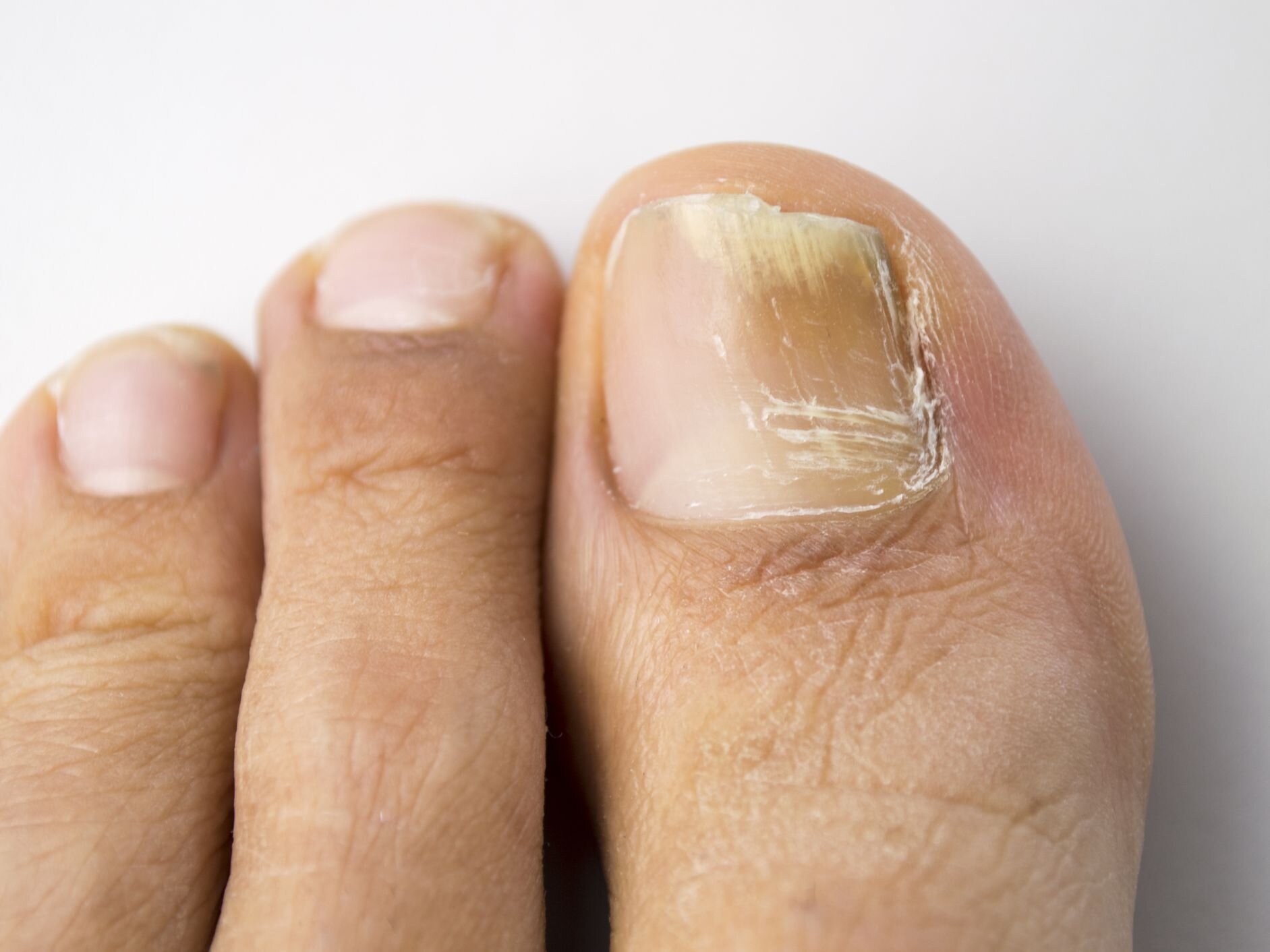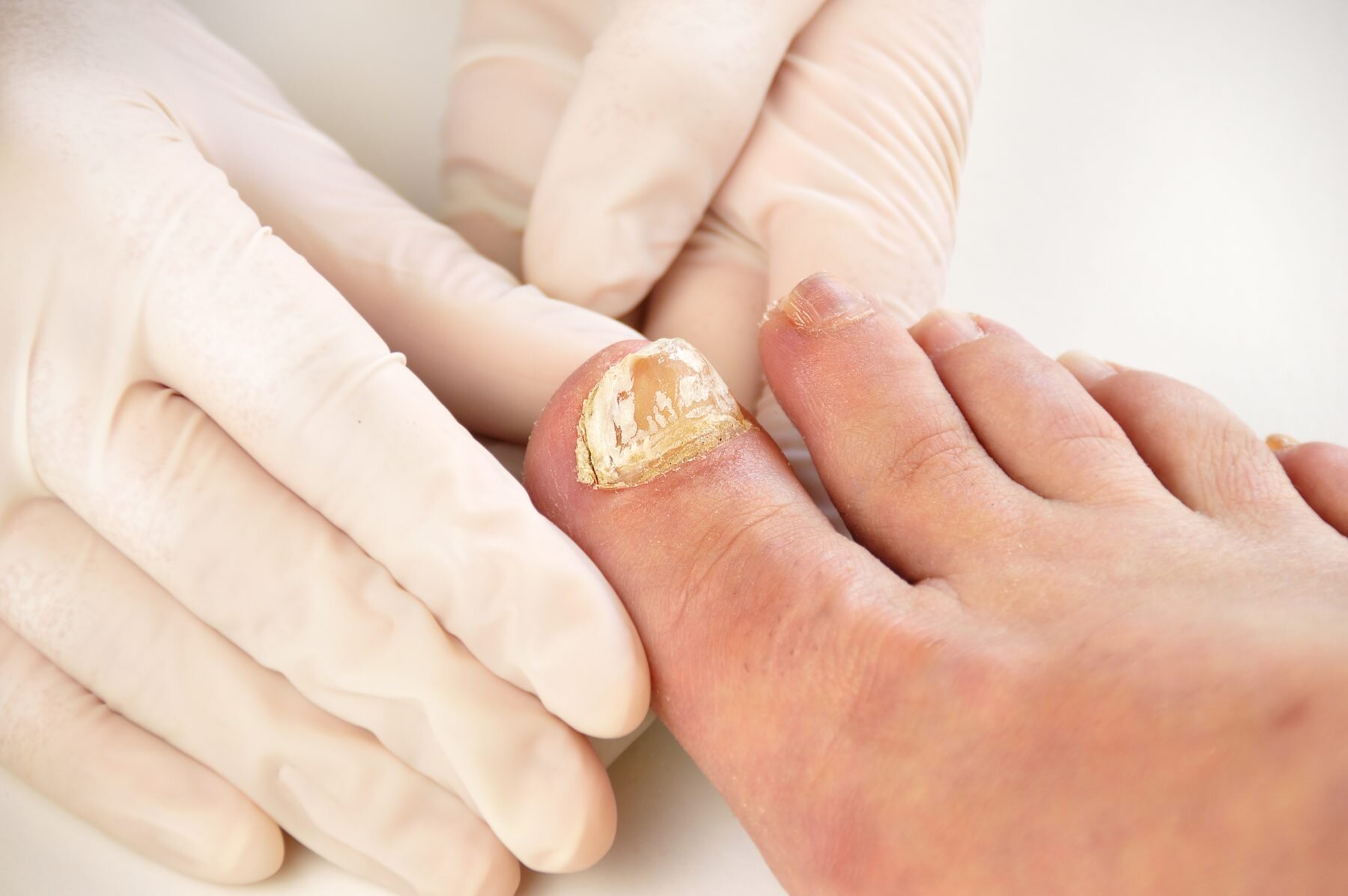Fungi are all around us, on our skin and our clothes, the surfaces we touch, and the objects we come in contact with every single day. But fear not, our body is well equipped to deal with these micro-organisms to ensure that (most of the time) they don’t cause problems. Sometimes fungi can turn into an infection, so let’s have a look at the way in which fungi can affect our skin and toenails.
First we should consider the environment in which fungi thrive. They love a warm, moist, dark, protected environment. Shoes would be an excellent example of this type of environment, which is a major reason why fungal infections occur more frequently on the feet.
The two most common fungal infections that can occur on the feet are an infection in the toenail, and an infection in the skin. These two types of infection are outlined in greater detail below.
Tinea Pedis
A fungal infection of the skin is known as tinea pedis. These infections occur in the most superficial layers of the skin and typically present as red and itchcy patches on the feet. The most common locations for tinea pedis on the feet are in between the toes and on the sole of the foot. Tinea pedis is also sometimes referred to as ringworm becuase the skin can become dry and form small rings. The picture below shows a common presentation of tinea pedis.
Treatment
Tinea pedis is usually easy to treat by applying topical anti-fungals. The podiatrists at Fitzroy Foot and Ankle Clinic can advise you of the most effective topical anti-fungal to apply.
While topical anti-fungal cream will treat the infection, it is important to prevent this from happening again. Our podiatrists can discuss prevention strategies to remove fungi from your environment (such as footwear and socks).
Fungal toenail
A fungal infection of the toenail is known as onychomycosis. Fungal toenails can occur beneath the nail or on top of the nail plate. When they are under the nail they usually appear yellow and the nail can become thickened. This tends to happen from the end of the nail, and progress down the nail plate. This type of fungal infection can be difficult to treat, so people may have a better outcome if they start treatment early. When the fungal infection is on top of the nail the fungal infection usually appears white and can be easily scraped off the nail.
Sometimes a damaged toenail and a fungal toenail can look similar, and there are a number of other conditions that can cause changes to your toenail. Therefore, it is appropriate to see a podiatrist for a diagnosis. We use clinical appearance in combination with fungal toenail test kits to confirm a diagnosis.
Treatment
The podiatrists at Fitzroy Foot and Ankle Clinic can offer a wide selection of treatment options for fungal toenail infections.
These treatments include:
Reduction of the infected nail using a variety of medical grade, sterilised instruments (this may sound nasty but it doesn’t hurt),
Advice on topical anti-fungal treatments that can be purchased pharmacy, including what to buy and how to safely apply it,
Advice on the oral anti fungal medication available to some patients and the process of being prescribed this, if it is suitable and appropriate,
Advice and education around treatment modalities available to patients outside of the clinic, such as laser treatment,
Tips for improving the local environment that may reduce or prevent the spread of fungi (such as socks, shoes, towel, sheets, floor surfaces).
Finally, treating a fungal infection can take time, and accepting that it may take up to a year to resolve is an important expectation to set.




